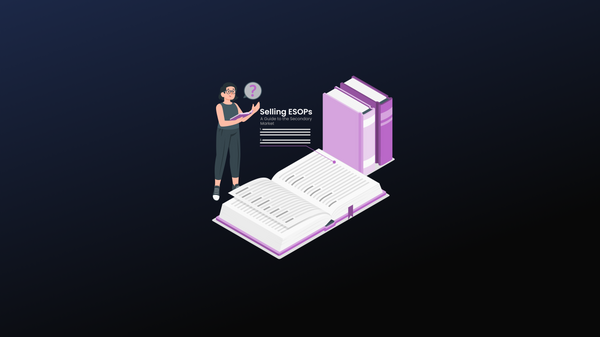ESOPs and their Taxation in India
TL;DR:
ESOP taxation in India involves paying tax at two stages - at the time of exercise and at the time of sale. Understanding the nuances around perquisite tax, capital gains tax, listed vs unlisted shares, and indexation benefits can help you optimize your tax liability and maximize returns from your ESOPs.
Highlights
- Perquisite tax is levied on the difference between exercise price and fair market value at the time of exercise. This can be deferred by 5 years for eligible startups.
- Capital gains tax applies when you sell the shares. It varies based on the holding period and whether shares are listed or unlisted.
- Holding for over 1 year (2 years for unlisted) gets you beneficial long-term capital gains tax rates.
- Indexation benefits further reduce taxable capital gains for long-term holdings.
- Thoughtful exercise and sale timing can lead to significant tax savings.
Introduction
Employee stock ownership plans or ESOPs have become a popular way for startups to reward and retain talent. With high-growth companies like Swiggy, Zomato and others offering ESOPs, employees get a chance to share in the company's success.
However, the taxation of ESOPs in India is quite complex. Unless you understand the implications, you could get stuck with a massive tax liability or lose out on potential savings.
This blog post will demystify ESOP taxation so you can make informed decisions and optimize your tax outgo.
Breaking Down ESOP Taxation in India
Broadly speaking, ESOPs attract tax at two points:
1. At Exercise
This is when you buy the shares allotted to you under the ESOP scheme. The difference between the exercise price and the fair market value (FMV) of the shares is considered a perquisite.
For example, if the exercise price is ₹10 per share but the FMV is ₹100, the ₹90 per share discount is the taxable perquisite.
This perquisite amount gets added to your income for the year and is taxed at your applicable rate. For someone in the 30% bracket, this translates to ₹27 per share as tax.
Deferring Perquisite Tax
In 2020, the government allowed the deferment of perquisite tax by 5 years for ESOPs of eligible startups. So you only pay this tax when you sell the shares or leave the company, whichever happens first.
This deferral comes as a big relief, considering large ESOP grants could lead to a ballooning tax burden. Make sure to check your company's eligibility for this benefit.
2. At Sale
When you finally sell the ESOP shares, you incur capital gains tax. The rate depends on:
Holding period: Short-term vs long-term capital gains tax
Listing status: Tax rates vary for listed and unlisted shares
Let's understand this in detail:
A. Listed Company Shares
Once the company is publicly listed, the ESOP shares are considered at par with regular shares.
Short-term capital gains tax (holding period < 1 year) is 15%
Long-term capital gains tax (holding period >= 1 year) is 10%
Clearly, holding for over a year fetches you the lower LTCG rate.
B. Unlisted Company Shares
For short-term holdings (< 2 years), capital gains are simply added to your income and taxed at applicable rates
Long-term capital gains (holding period >= 2 years) have a flat 20% tax, plus a surcharge
The key difference versus listed shares is that the long-term holding period is 2 years instead of 1 year.
Unlisted LTCG also comes with an indexation benefit, which adjusts the cost for inflation and reduces the taxable portion of capital gains.
Tax Optimization Tips
Carefully planning the exercise and sale timing of your ESOPs can lead to significant tax savings:
Exercise early to start the clock for long-term capital gains
Consider deferring perquisite tax if you get the startup benefit
Hold for over 1 year after exercise to get LTCG rate
In case of unlisted shares, wait for over 2 years for LTCG eligibility
Indexation benefit further reduces taxable gains in case of unlisted LTCG
Conclusion
ESOP taxation may seem intimidating but is quite logical once you grasp the core concepts. Perquisite tax at exercise can be deferred for startups, while capital gains tax at sale varies based on holding period and listing status. Planning exercise and sale timing prudently can lead to exponential savings in taxes and maximize returns from your ESOPs.
With this comprehensive understanding, you are now equipped to make smart decisions around your ESOPs and keep more of that upside in your own pockets! The key is to be aware of the tax implications at different stages and work your ESOP strategy accordingly. Get clarity on your startup's eligibility for tax deferral. Target long-term holding periods for lower capital gains tax rates. And utilize indexation to your advantage.
Arm yourself with the right knowledge and professional advice to navigate the ESOP taxation maze. Stay compliant, optimize your tax outgo and make the most of your hard-earned ESOPs. The money you save on taxes can be invested for other goals. So take charge of your ESOP taxation planning right away!



